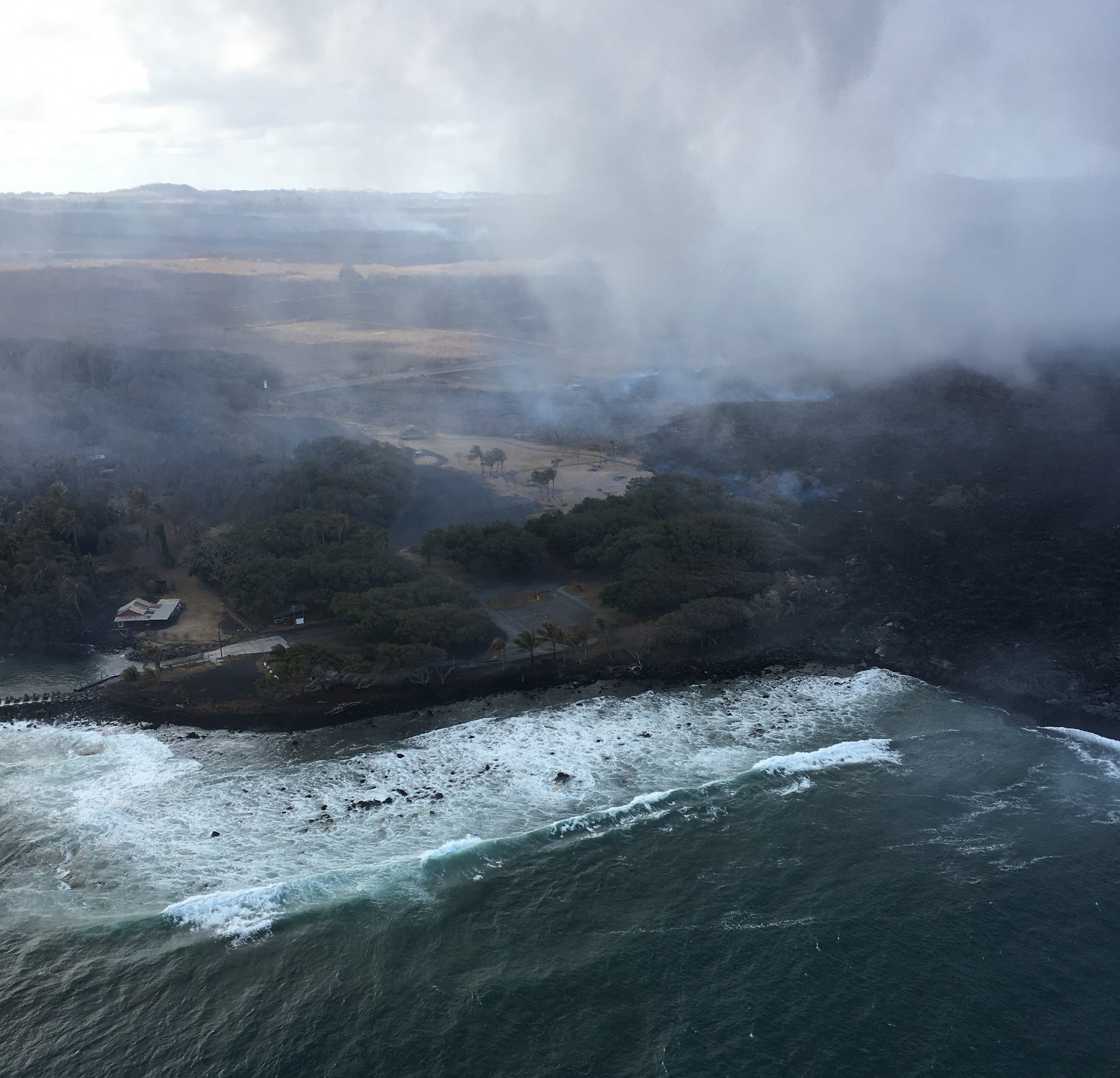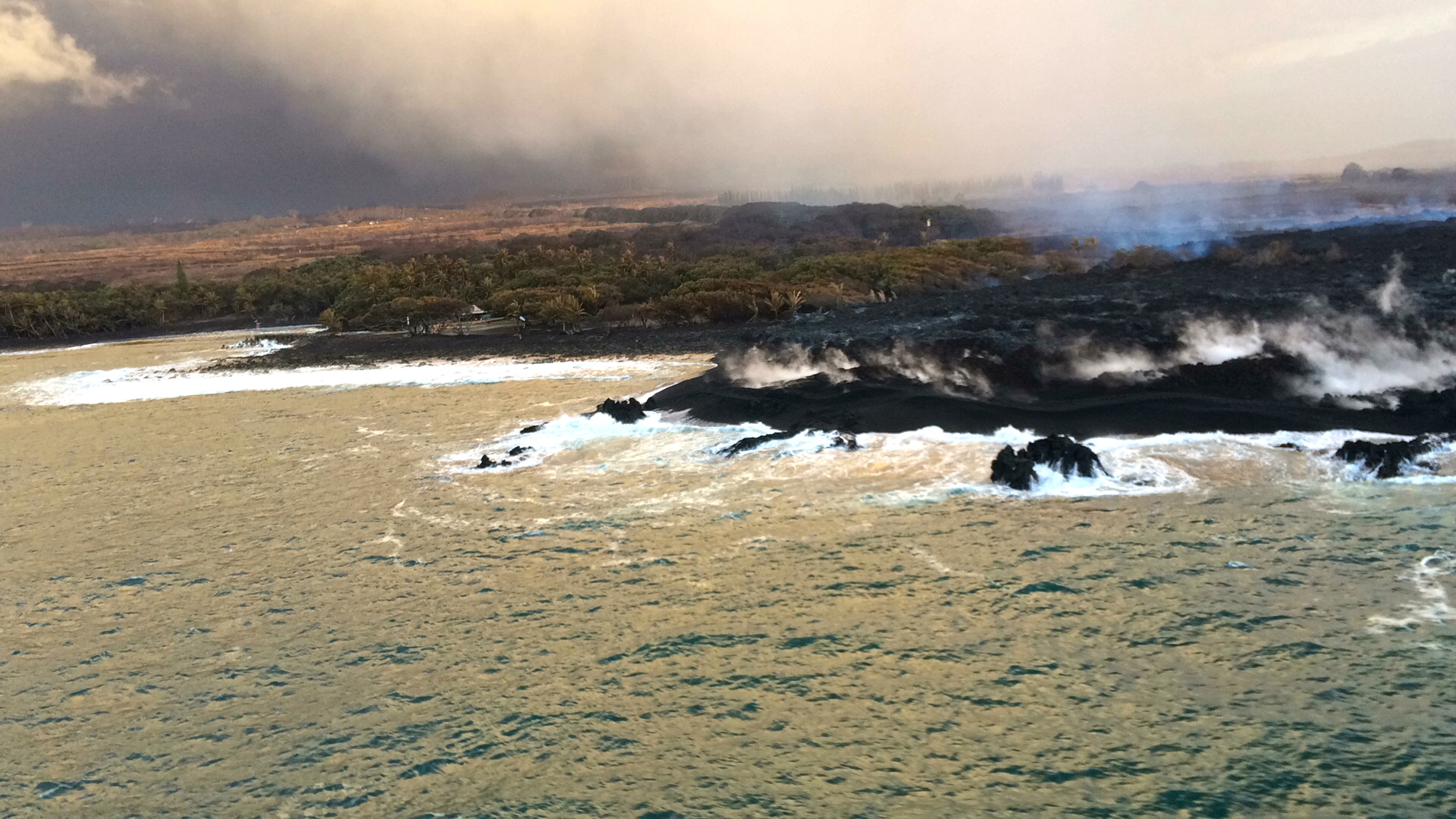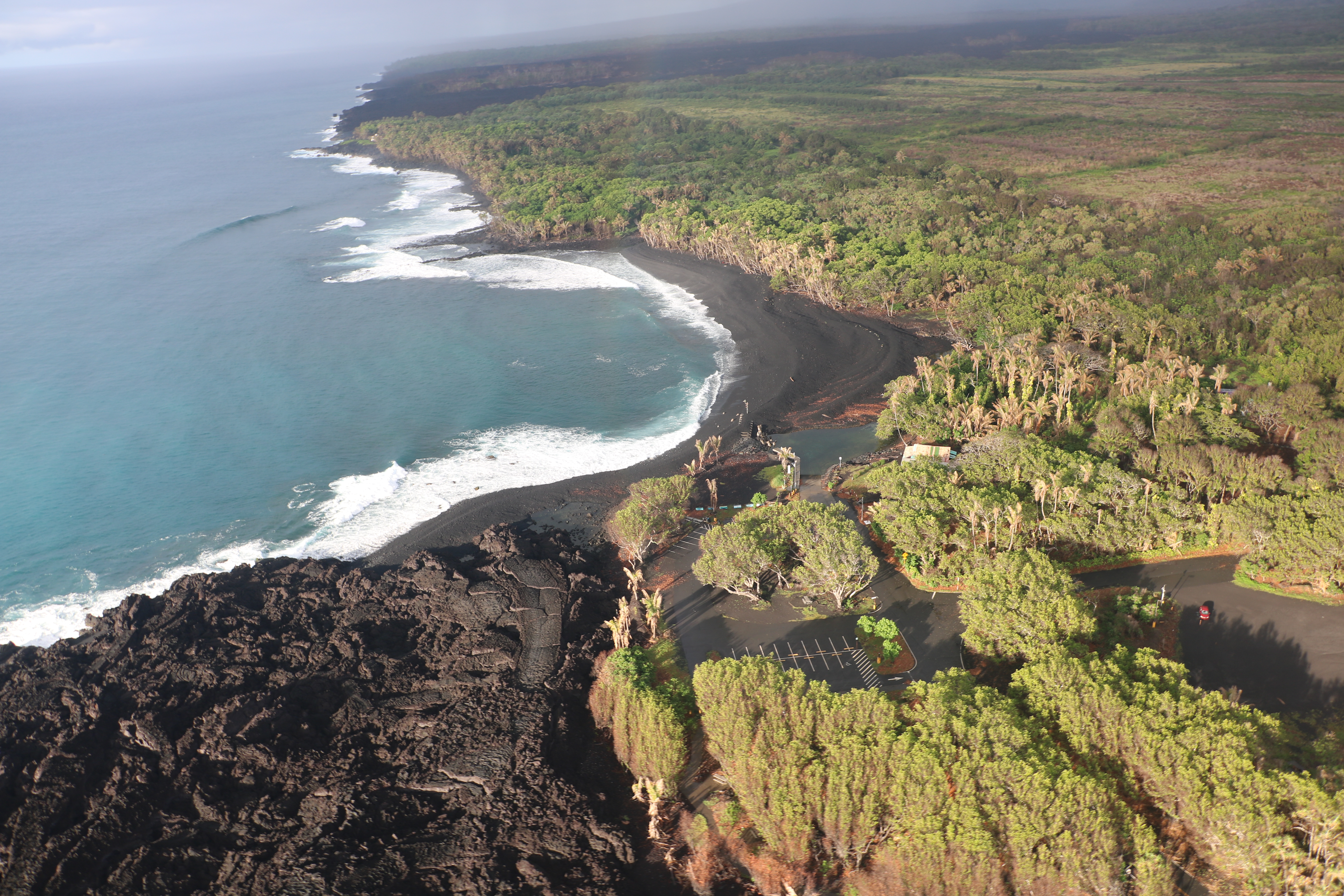Eruption waning?
Status link
Kīlauea Volcano Lower East Rift Zone
Activity and lava output from fissure 8 remains low. The morning overflight crew observed a small active lava lake within the fissure 8 cone, a weak gas plume, and a drained upper lava channel. The surface of the lava lake was about 5-10 m below the spillway entrance. There were a diminishing number of small active ooze outs near the coast on the Kapoho Bay and Ahalanui lobes and the laze plume was greatly diminished. Active lava remains close to the Pohoiki boat ramp but has not advanced significantly toward it.
The significance of this change is not yet clear and hazardous conditions remain in the area. HVO field crews and the UAS team will monitor activity throughout the day and overnight.
It is common for eruptions to wax and wane or pause completely. A return to high levels of lava discharge or new outbreaks in the area of active fissures could occur at any time.
Residents should remain informed and heed Hawaii County Civil Defense messages and warnings.
Kīlauea Volcano Middle East Rift Zone
Gas measurements of the Puʻu ʻŌʻō plume taken on Monday and Tuesday morning indicated a reduced SO2 emission rate lower than the measurement last Friday and similar to what has been observed over the past three months. No active lava was observed in the crater on an overflight on August 6th.
Kīlauea Volcano Summit
The volcano's summit remains quiet following the most recent collapse at 11:55 a.m. HST August 4th. This continues a significant departure from the pattern of seismicity and deformation over the past several months, with very low rates of seismicity continuing today. The deformation at the summit as measured by tiltmeter and GPS instruments has virtually stopped.
Summit and LERZ changes considered together imply that the rate of magma leaving the summit to feed the Lower East Rift Zone eruption has decreased. How long this condition will persist is unknown. It is possible that outflow will pick up again, resulting in renewed summit area deflation leading to another collapse event and renewed eruption vigor on the LERZ.


